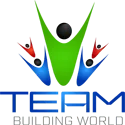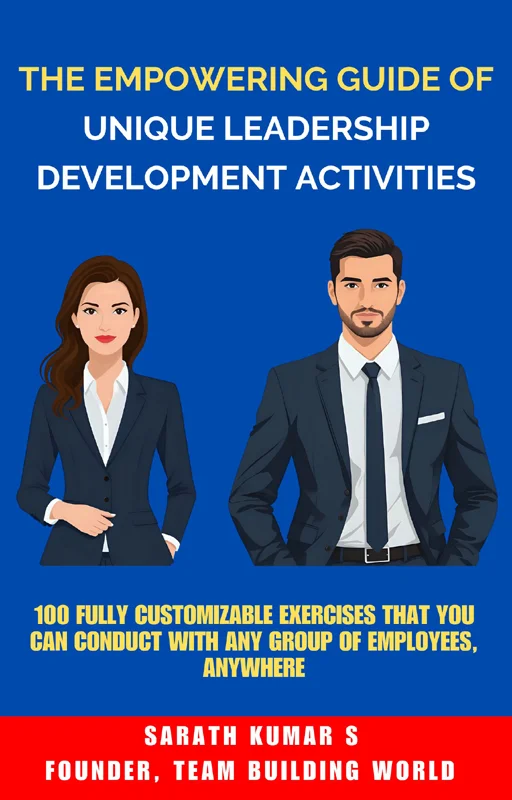10 Team Building Activities for the Board of Directors
Are you in search of some team building activities for the board of directors?
Strong leadership begins with strong relationships. For the board of directors, who often come from diverse professional backgrounds, team building is critical for fostering trust, improving collaboration, and developing a united vision for their organization. But when was the last time your board stepped out of the boardroom to engage in meaningful group activities? If the answer isn’t recent, it’s time to make it a priority.
In this article, let’s discuss 10 team building exercises specifically designed for the board of directors. They will strengthen connections, improve decision-making, and elevate your group’s overall performance.
Why Team Building Matters for the Board of Directors?
The board of directors holds immense responsibility. They shape the strategic framework of an organization, oversee its progress, and ensure smooth governance. While individual expertise is important, seamless cooperation among leadership team members is even more critical. With group exercises, you can:
- Foster trust among members.
- Enhance communication and problem-solving skills.
- Break hierarchical barriers.
- Build a shared sense of purpose.
A board that functions as a cohesive unit is better equipped to tackle challenges, adapt to change, and achieve organizational goals.
10 Team Building Activities for the Board of Directors
Here are some helpful team building exercises for the board of directors.
#1. Visionary Retreat
This activity helps leaders build a shared vision and develop a strong sense of purpose for the organization.
Time: 10-20 minutes
Materials: Flipchart or whiteboard, and markers
Participants: Groups of any size
Instructions
- Engage in discussions to brainstorm long-term objectives and goals that will shape the company’s future.
- Discuss how each member can contribute to achieving these goals.
- Encourage active participation to ensure alignment among board members, valuing everyone’s input. The aim is to establish a shared understanding of the company’s vision.
Debrief
Reflect on the key goals and priorities identified during the retreat. Discuss how these goals align with the company’s overall strategy and how they can contribute to its long-term success.
You can also read: 10 Leadership Team Building Exercises (With Debrief)
#2. Collaborative Problem Solving
This activity helps leaders to develop a shared approach to tackling complex issues.
Time: You decide
Materials: Whiteboard or flipchart, markers, and sticky notes
Participants: Groups of 3-6 people
Instructions
- Present a case study or real-world problem for the team to solve together. For example, brainstorm solutions for a current challenge the organization is facing.
- Ask each team member to contribute their ideas by writing them on sticky notes and placing them on the whiteboard or flipchart.
- Encourage open communication and active listening during this exercise.
Debrief
Discuss the solutions presented and identify common themes or areas of agreement among board members. Reflect on the importance of incorporating different perspectives and ideas when solving problems as a team.
You can also read: 10 Board Meeting Presentation Examples for Leaders
#3. Strengths-Based Bingo
This activity is designed to help leaders identify each other’s strengths, leading to a better understanding of individual roles and contributions within the group.
Time: 15-20 minutes
Materials: Bingo cards with various strengths listed in each square, and markers
Participants: 3-8 people per group
Instructions
- Distribute bingo cards with different strengths listed in each square.
- Ask each member to introduce themselves and share an example of how they have demonstrated that strength in their role as a board director.
- Encourage members to interact with each other and find someone who matches the strengths listed in their squares, marking them off on their bingo card.
Debrief
Discuss how identifying and utilizing individual strengths can lead to a more effective and cohesive team dynamic. Reflect on any overlapping or complementary strengths within the group, and how they can be utilized for the benefit of the organization.
#4. Strategic Planning Game
This activity helps leaders practice strategic thinking while also stimulating creativity and collaboration.
Time: You decide
Materials: Board game template, dice, game pieces, and strategy cards
Participants: Groups of 3-6 people
Instructions
- Create a board game template with different spaces representing various challenges and opportunities that the company may face.
- Each group takes turns rolling the dice and moving their game pieces around the board. When landing on a space, they draw a strategy card that presents a potential scenario for the organization to navigate.
- The group must discuss and agree on the best strategic approach to take, considering all possible outcomes.
Debrief
Discuss how this activity promoted strategic thinking and collaboration within the group. Reflect on any innovative or out-of-the-box solutions that were proposed during the game.
You can also read: 10 Strategic Planning Team Building Activities
#5. Leadership Book Club
This activity promotes continuous learning and facilitates open discussions about leadership principles among the board of directors.
Time: You decide
Materials: Chosen leadership book, and discussion questions
Participants: Any number of people per group
Instructions
- Choose a leadership book to read as a group and set a timeline for completing each chapter.
- After reading each chapter, come together as a group to discuss key takeaways and how they can be applied to the board’s role and responsibilities.
- Use discussion questions to spark conversations and encourage everyone to participate.
Debrief
Reflect on any new insights or perspectives gained from the book club discussions. Discuss how these principles can be implemented within the board’s operations and decision-making processes.
#6. Role Reversal Discussion
This activity involves directors stepping into the shoes of another role, such as CEO, HR head, or an employee. It allows for a better understanding of each role’s challenges and responsibilities.
Time: 15-20 minutes
Materials: None
Participants: 3-8 individuals in a group
Instructions
- Assign each member a different role within the organization and ask them to prepare for the discussion by researching their assigned role’s responsibilities, challenges, and goals.
- During the discussion, each member must contribute from the perspective of their assigned role rather than their actual one.
Debrief
Discuss any new insights gained from stepping into different roles. Reflect on how this activity can promote empathy and understanding among board members towards other roles within the organization.
#7. Board Member Swap
This activity promotes cross-functional understanding and appreciation among board members.
Time: You decide
Materials: None
Participants: Pairs
Instructions
- Assign each member a different role on the board for the duration of the exercise. For example, a marketing executive may swap roles with a finance director.
- Each member must carry out their new role’s responsibilities to gain a better understanding of its functions and challenges.
- Encourage open communication and reflection on the experience after swapping back to original roles.
Debrief
Discuss how this activity helped to foster cross-functional understanding and collaboration among board members. Reflect on any insights gained and how they can be applied to the board’s operations.
#8. SWOT Analysis
This activity helps to identify the organization’s strengths, weaknesses, opportunities, and threats while promoting collaboration among board members.
Time: 15-20 minutes
Materials: Whiteboard or flipchart paper, and markers
Participants: 3-6 individuals per group
Instructions
- Divide the board into smaller groups and assign each group a specific area of the organization to focus on (strengths, weaknesses, opportunities, or threats).
- Each group brainstorms ideas and writes them down on the whiteboard or flipchart paper.
- After all groups have completed their section, come together as a whole board to discuss and analyze the results.
Debrief
Discuss how this activity helped to identify key areas for improvement and potential risks for the organization. Collaborate on solutions to address any identified weaknesses or threats.
#9. Case Study Game
This activity allows leaders to apply critical thinking skills and problem-solving techniques through real-world scenarios.
Time: You decide
Materials: Pre-selected case studies, and discussion questions
Participants: Groups of any size
Instructions
- Choose pre-selected case studies relevant to the organization’s industry or challenges.
- Provide the case studies to board members in advance, and ask them to come prepared with their analysis and potential solutions.
- As a group, discuss each case study, its implications, and potential courses of action.
Debrief
Reflect on how this activity helped to sharpen critical thinking skills and decision-making processes among board members. Discuss any key takeaways from the case studies that can be applied within the organization.
#10. Speed Networking
This activity promotes networking opportunities among leaders while also allowing for casual conversations and relationship building.
Time: 10-20 minutes
Materials: None
Participants: 4-8 people in a group
Instructions
- Divide the board into smaller groups and have each group sit in a circle.
- Set a timer for 2 minutes and prompt each member to introduce themselves, their role on the board, and one interesting fact about themselves.
- After 2 minutes, rotate the groups so that everyone has had the chance to meet and chat with new people.
Debrief
Reflect on how this activity helped to foster relationships among board members outside of formal meetings. Discuss any potential benefits of building these connections within the organization.
Tips for Successfully Implementing Team Building Exercises
Align with Objectives: Choose activities aligned with your board’s goals and challenges.
Set Expectations: Communicate the purpose and expected outcomes of each activity to board members in advance.
Encourage Participation: Create a safe environment that encourages all the board members to participate and share their thoughts.
Mix it Up: Include a variety of activities to address different learning styles and keep things interesting.
Debrief Effectively: Ensure that there is time set aside after each activity for reflection, discussion, and action planning.
Want Some Unique Leadership Development Activities?
If you want some unique activities to equip your employees with leadership skills, qualities, and mindset, you can get my new e-book:
Or Want Some Unique Team Building Activities?
If you want some unique activities for your employees (both in-person and virtual), you can get my new e-book:
Final Words
Team building is not a one-time investment—it’s an ongoing process. By incorporating these activities, your board can work more cohesively, think strategically, and build the trust needed to achieve long-term success. Remember to have fun and celebrate the wins along the way. After all, a strong board is not just about meetings and decisions. It’s also about building relationships and fostering a positive culture within the organization.
FAQ: Board of Directors Team Building Activities
You might have these questions in mind.
How often should team building exercises be carried out?
These exercises can vary in frequency, but it is recommended to have at least one session per month. However, if there are specific challenges or conflicts within the board, it may be beneficial to schedule more frequent sessions.
Can we do these activities virtually?
Yes, many of these activities can be adapted for virtual settings. It’s important to ensure all the members have access to the necessary technology and a quiet environment for effective participation. It may also be helpful to schedule shorter, more frequent virtual sessions rather than longer in-person sessions.
How do we measure the success of these activities?
Success can be measured through improved relationships, increased trust, and enhanced problem-solving skills within the board. You may also consider conducting anonymous surveys before and after the activities to gauge perceptions and any changes in attitudes or behaviors among members.

